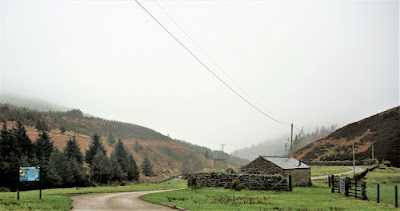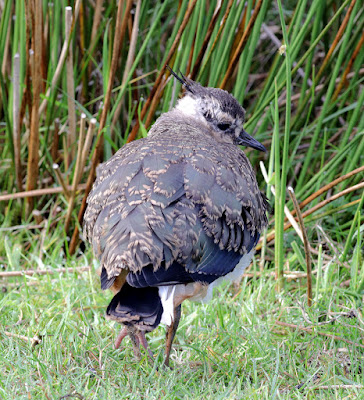Tuesday morning and there’s still no ringing while Avian Flu is around but there’s no harm in looking and planning for better days.
At 0815 Andy picked me in up in his flash-black Mercedes for a 30 mile trip up to Dunsop Bridge, a village surrounded on all sides by the rolling hills of the Forest of Bowland, an Area of Outstanding Natural Beauty. The title ‘Forest’ refers to long established Royal hunting rights, and not as we interpret it today, as a large expanse of woodland. Nearby is Salter Fell Track, a pass along which the Lancashire Witches are believed to have been taken to their trial and later hanging at Lancaster Castle in 1612.
Dunsop Bridge lies at the confluence of the River Dunsop and the River Hodder before the Hodder flows south to join the River Ribble outside Clitheroe. This is a peaceful, beautiful and mostly undisturbed part of Lancashire where the landscape, environment and ecosystems combine to support a varied bird, insect and animal population.
Not least of the influential ecosystems are the renowned rainfalls and where on 8 August 1967, Dunsop Valley entered the UK Weather Records with the highest 90 minute total rainfall of 117 mm/4.6 inches.
We have newly acquired permission to catch and ring House Martins at a long-established colony location during the spring and summer of 2022. Our trip today a reconnoitre, a lay of the land to establish the method, equipment and timings needed for our eventual visits once the martins arrive from Africa during April & May to start their colony reconstruction.
The morning was misty and dank with poor visibility as we drove the private track alongside a meandering stream to our destination, a light industrial/office building, ideally situated and of perfect height and seclusion for nesting House Martins.
House Martin eaves
Dunsop Valley
We measured eighteen paces for a 40 foot net and twenty six paces for a 60ft across the grass immediately in front of the building where the west facing brickwork would allow a morning session away from glaring sun. Perfect.
After chatting to the guys who work there we said our “see you soon” and headed back to the village and eventually the A6 road towards Cockerham and our out of action ringing station.
As usual the Cockerham feeding station was busy with a steady turnover of birds visiting our seed drop spots - counts of 240+ Linnet, 20+Chaffinch, 15 Blackbird, 6 Reed Bunting, 4 Greenfinch and a couple of Moorhen. Moorhens are not averse to using feeding stations in the wintertime where they quite happily hoover up bird seed. There was the customary Sparrowhawk hanging around but giving just glimpses as it kept mostly out of sight of us and the birds it would target.
We still await an email from DEFRA/APHA and/or the BTO to let us know when the Avian Flu 10Km control zone is revoked so that we ring birds again.
We’ve missed out on catching a couple of hundred birds and all the data that would provide during December/January; and now eight weeks later and almost February, there's no end in sight.
Linking today to Eileen's Saturday Blog and Anni in Texas.











































































.jpg)












